Abstract
Pigeons were trained on three-component chain schedules in which the initial component was either a fixed-interval or variable-interval schedule. The middle and terminal components were varied among fixed-interval fixed-interval, variable-interval variable-interval, and an interdependent variable-interval variable-interval schedule in which the sum of the durations of the two variable-interval components was always equal to the sum of the fixed-interval fixed-interval components. At issue was whether the response rate in the initial component was controlled by its time to primary reinforcement or by the temporal parameters of the stimulus correlated with the middle terminal link. The fixed-interval initial-link schedule maintained much lower response rates than the variable-interval initial-link schedule regardless of the schedules in the middle and terminal links. Nevertheless, the intervening schedules played some role: With fixed-interval schedules in the initial links, response rates were consistently highest with independent variable-interval schedules in the middle and terminal links and intermediate with the interdependent variable-interval schedules; these initial-link differences were predicted by the response rates in the middle link of the chain. With variable-interval schedules in the initial links, response rates were lowest with the fixed-interval fixed-interval schedules following the initial link and were not systematically different for the two types of variable-interval variable-interval schedules. The results suggest that time to reinforcement itself accounts for little if any variance in initial-link responding.
Full text
PDF
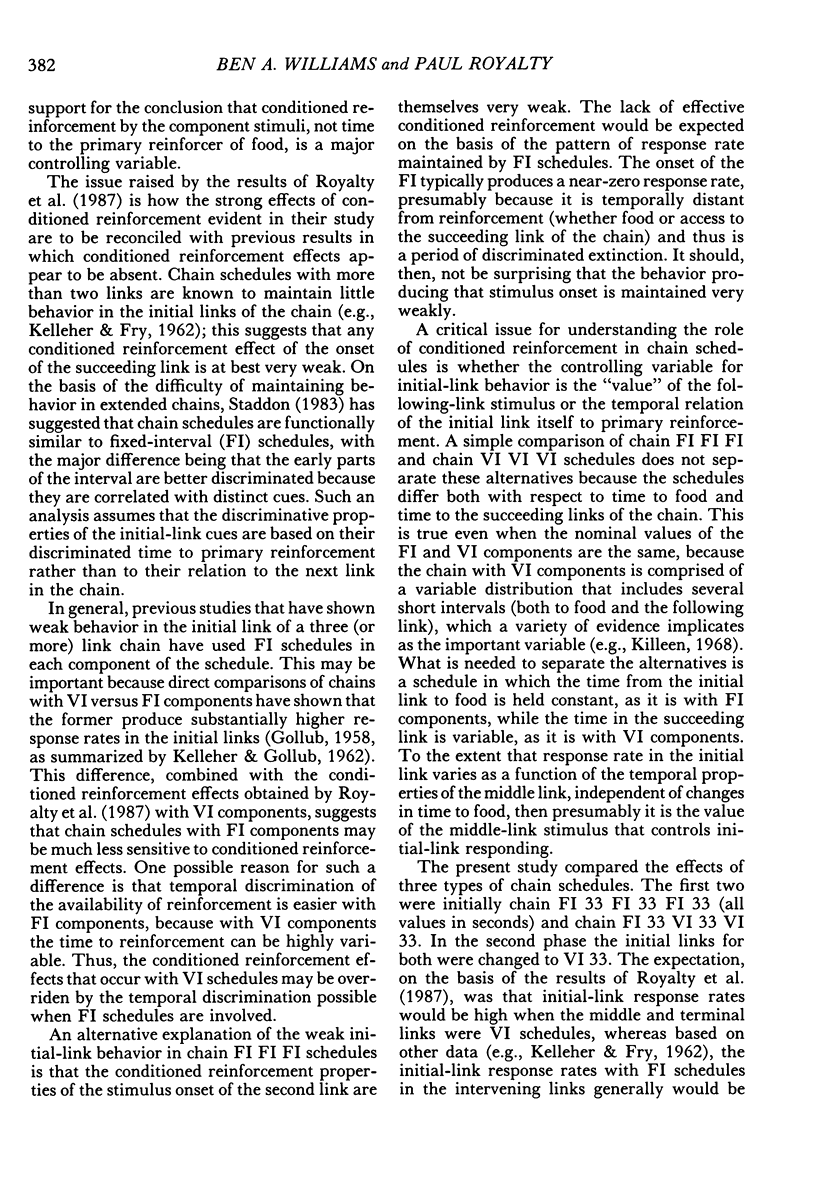
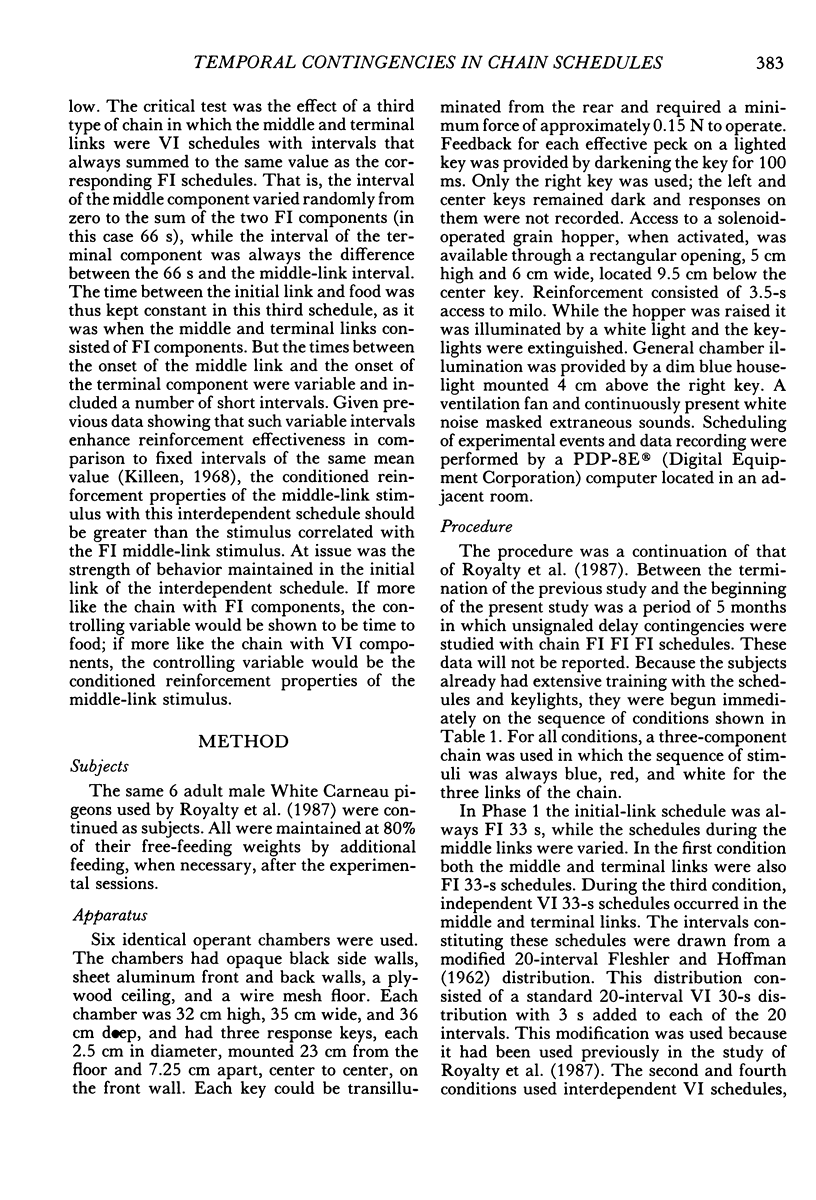
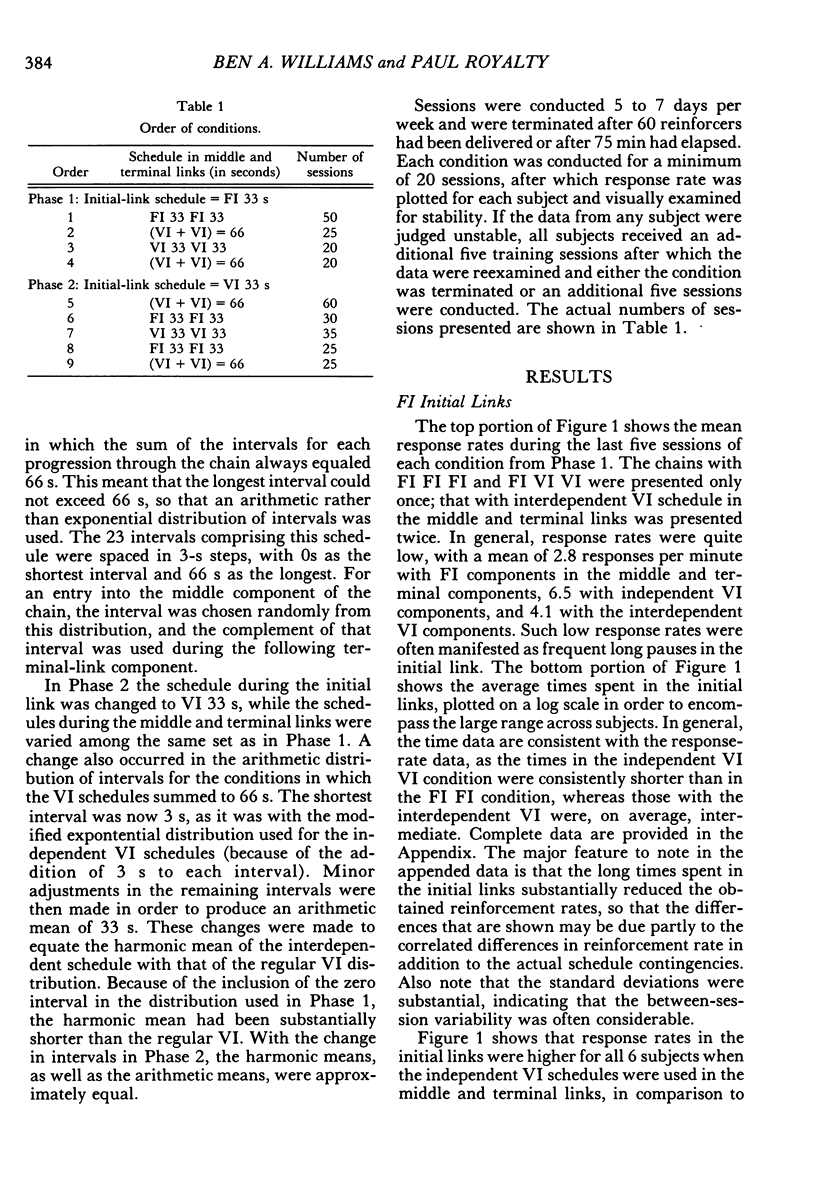
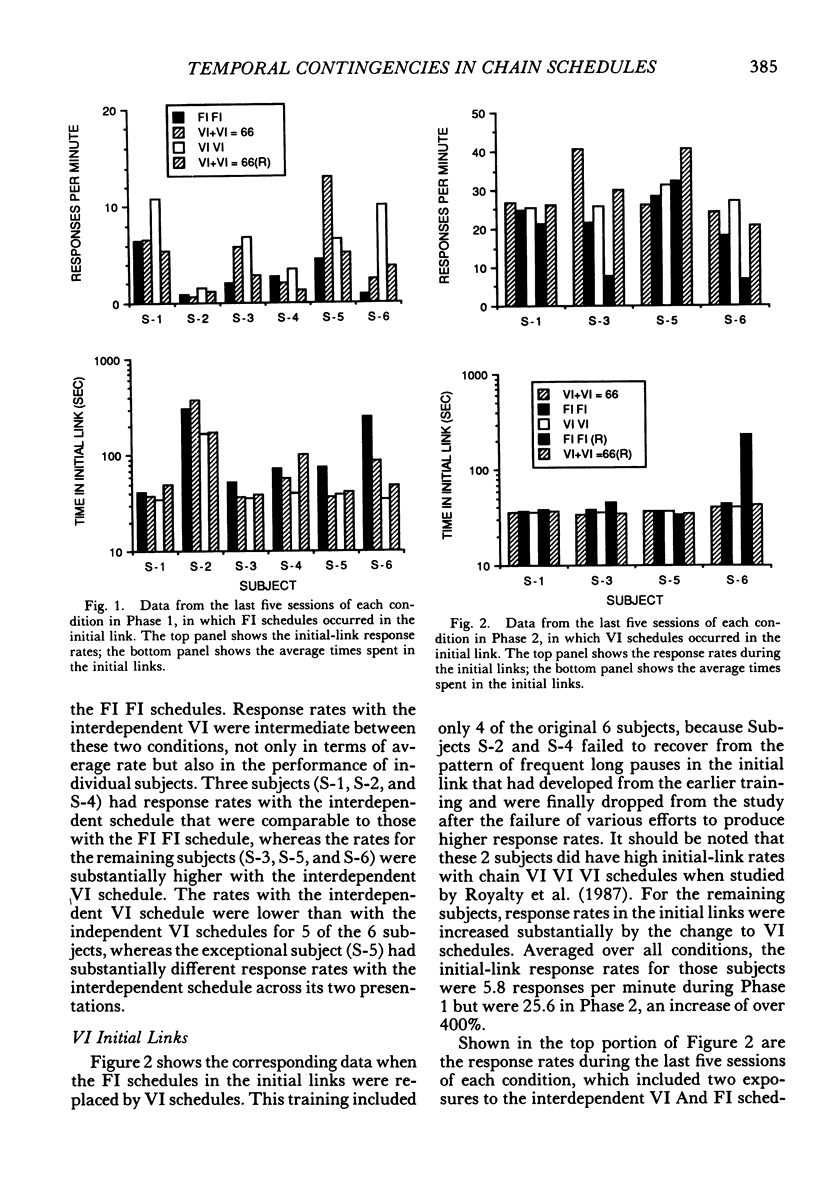
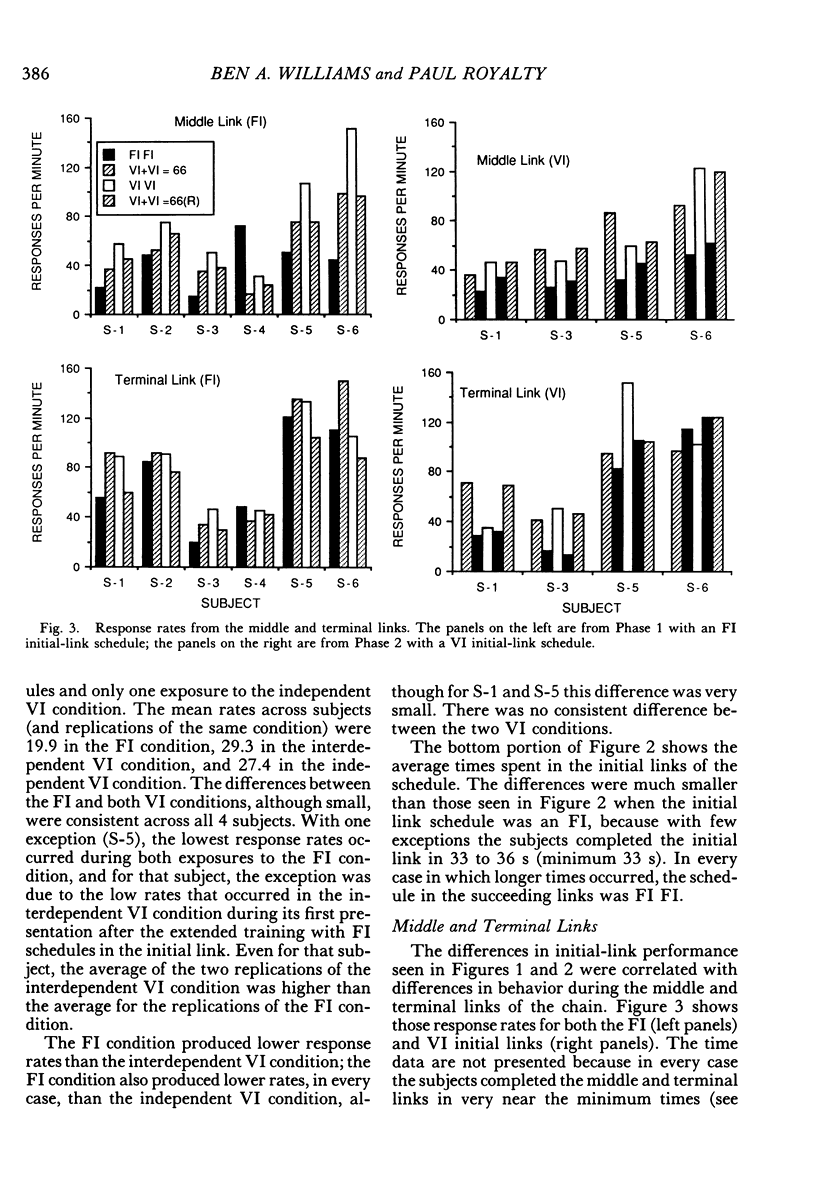
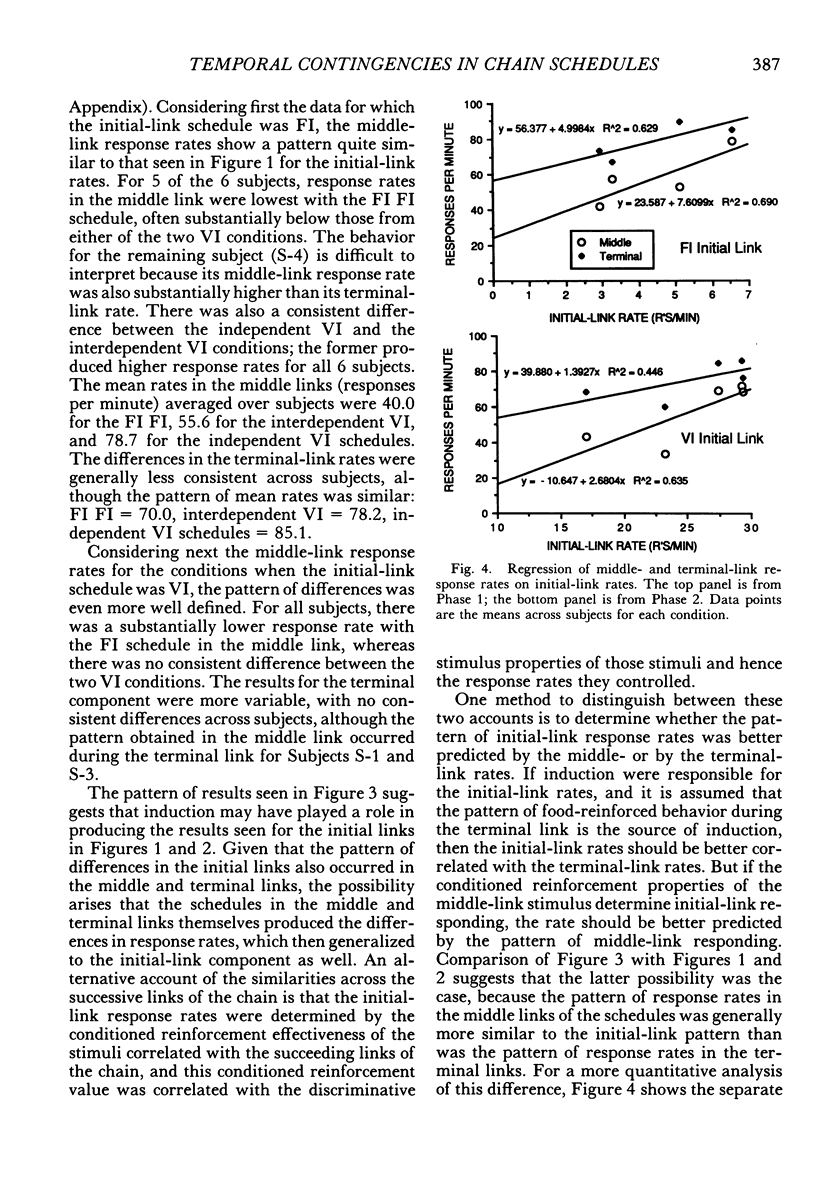
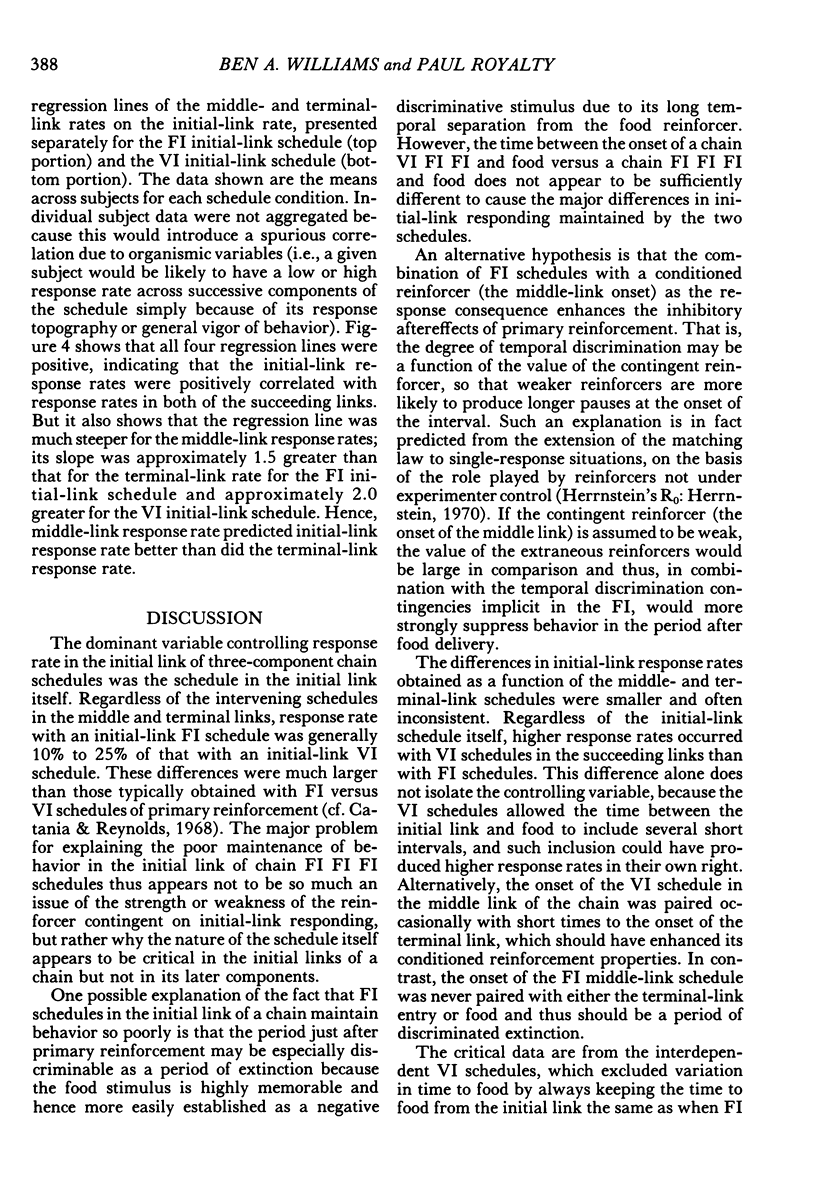
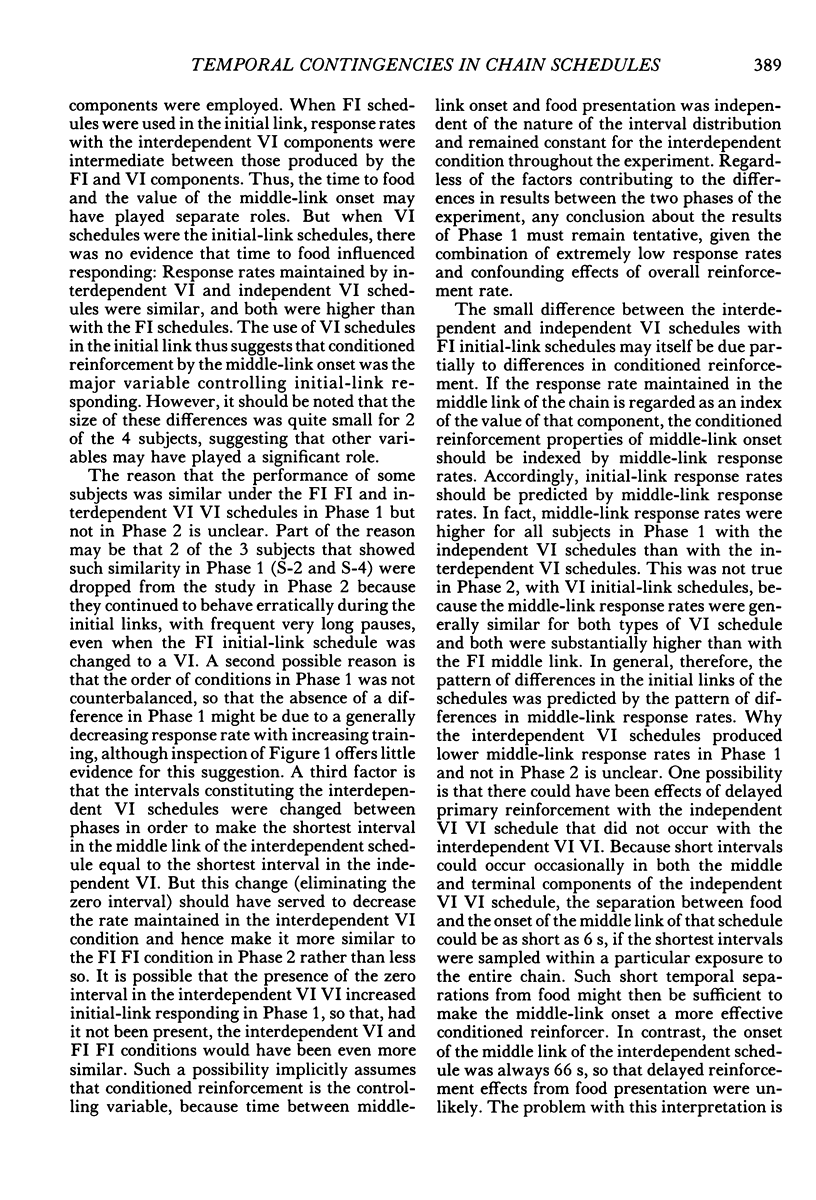
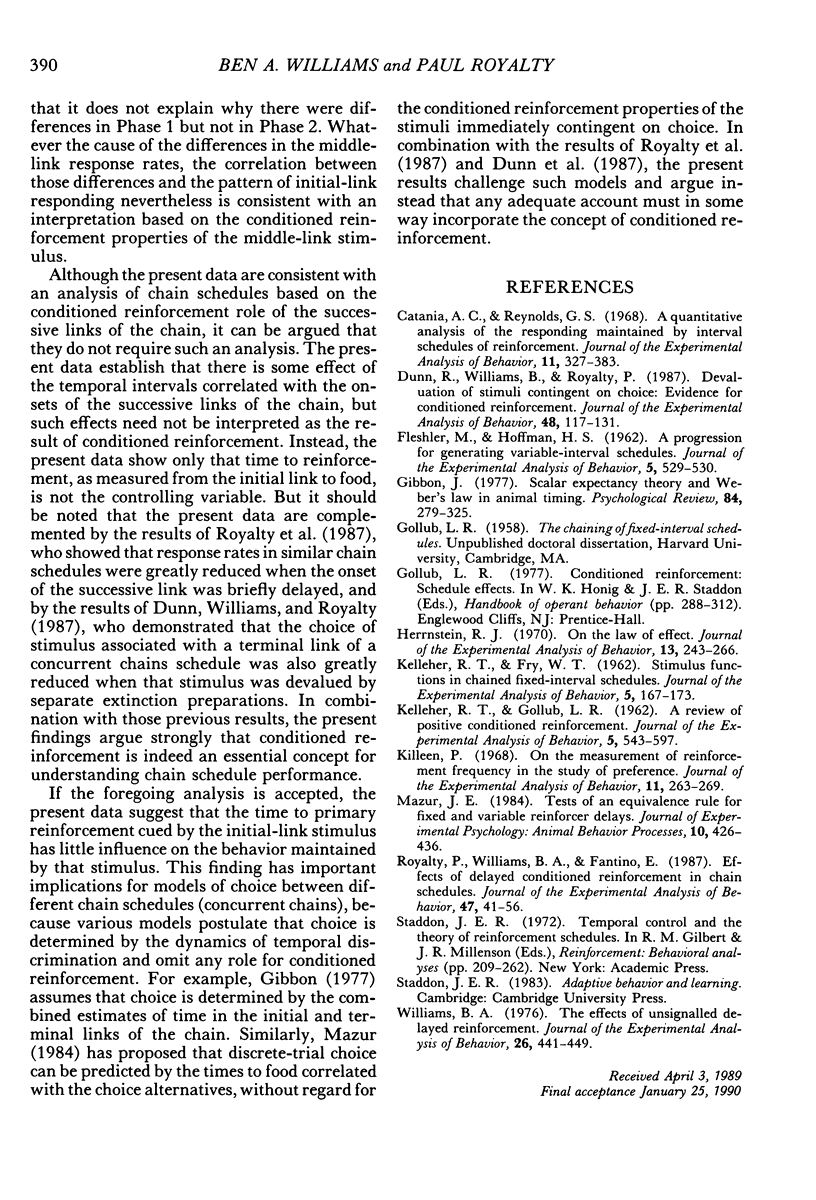

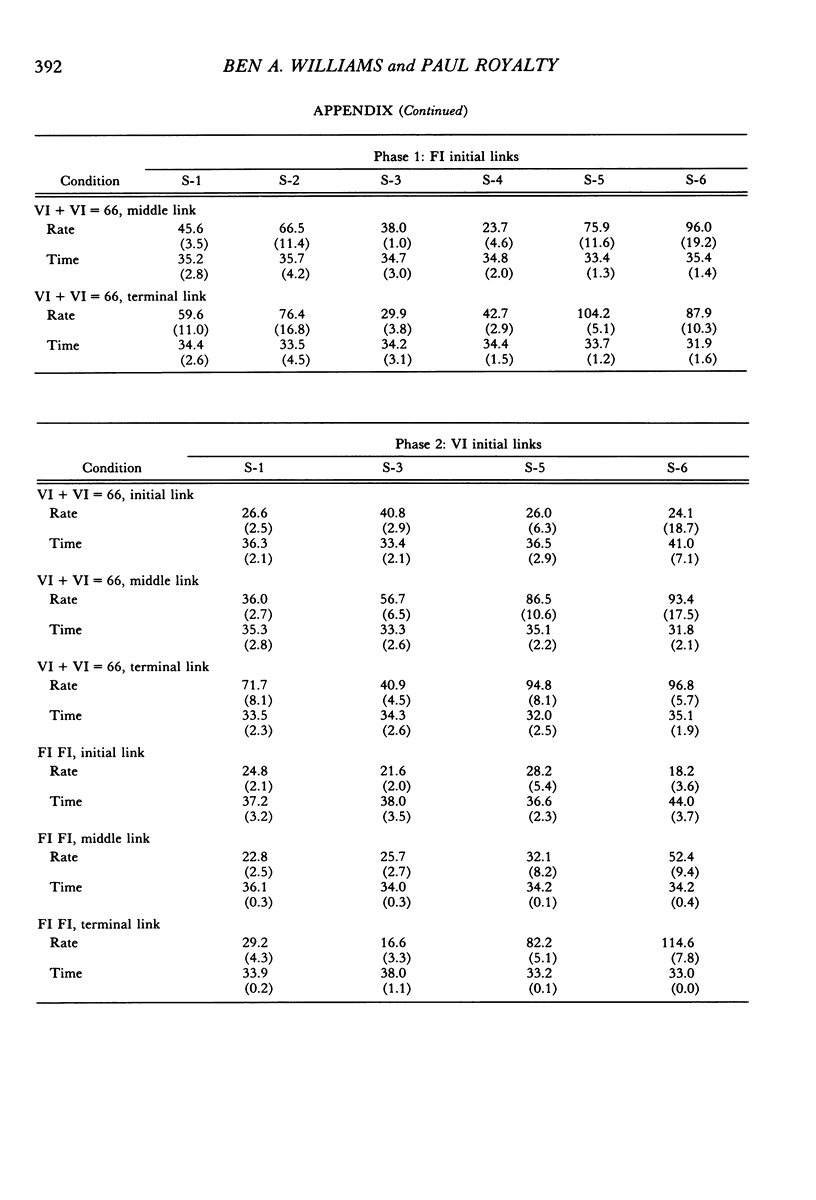

Selected References
These references are in PubMed. This may not be the complete list of references from this article.
- Catania A. C., Reynolds G. S. A quantitative analysis of the responding maintained by interval schedules of reinforcement. J Exp Anal Behav. 1968 May;11(3 Suppl):327–383. doi: 10.1901/jeab.1968.11-s327. [DOI] [PMC free article] [PubMed] [Google Scholar]
- Dunn R., Williams B., Royalty P. Devaluation of stimuli contingent on choice: evidence for conditioned reinforcement. J Exp Anal Behav. 1987 Jul;48(1):117–131. doi: 10.1901/jeab.1987.48-117. [DOI] [PMC free article] [PubMed] [Google Scholar]
- FLESHLER M., HOFFMAN H. S. A progression for generating variable-interval schedules. J Exp Anal Behav. 1962 Oct;5:529–530. doi: 10.1901/jeab.1962.5-529. [DOI] [PMC free article] [PubMed] [Google Scholar]
- Herrnstein R. J. On the law of effect. J Exp Anal Behav. 1970 Mar;13(2):243–266. doi: 10.1901/jeab.1970.13-243. [DOI] [PMC free article] [PubMed] [Google Scholar]
- KELLEHER R. T., FRY W. T. Stimulus functions in chained fixed-interval schedules. J Exp Anal Behav. 1962 Apr;5:167–173. doi: 10.1901/jeab.1962.5-167. [DOI] [PMC free article] [PubMed] [Google Scholar]
- KELLEHER R. T., GOLLUB L. R. A review of positive conditioned reinforcement. J Exp Anal Behav. 1962 Oct;5:543–597. doi: 10.1901/jeab.1962.5-s543. [DOI] [PMC free article] [PubMed] [Google Scholar]
- Killeen P. On the measurement of reinforcement frequency in the study of preference. J Exp Anal Behav. 1968 May;11(3):263–269. doi: 10.1901/jeab.1968.11-263. [DOI] [PMC free article] [PubMed] [Google Scholar]
- Royalty P., Williams B. A., Fantino E. Effects of delayed conditioned reinforcement in chain schedules. J Exp Anal Behav. 1987 Jan;47(1):41–56. doi: 10.1901/jeab.1987.47-41. [DOI] [PMC free article] [PubMed] [Google Scholar]
- Williams B. A. The effects of unsignalled delayed reinforcement. J Exp Anal Behav. 1976 Nov;26(3):441–449. doi: 10.1901/jeab.1976.26-441. [DOI] [PMC free article] [PubMed] [Google Scholar]


